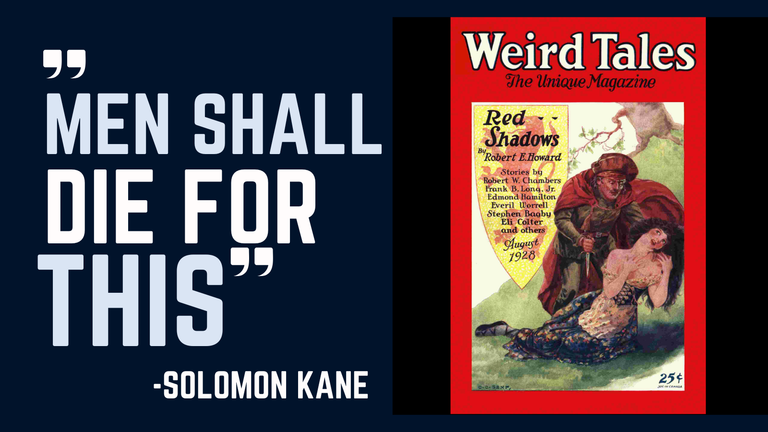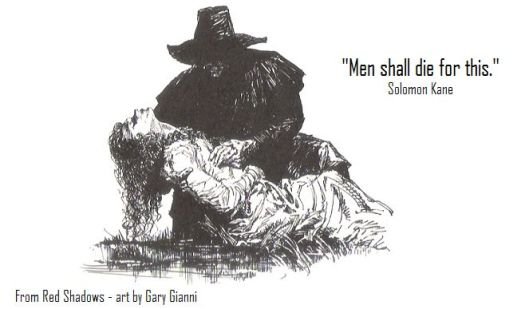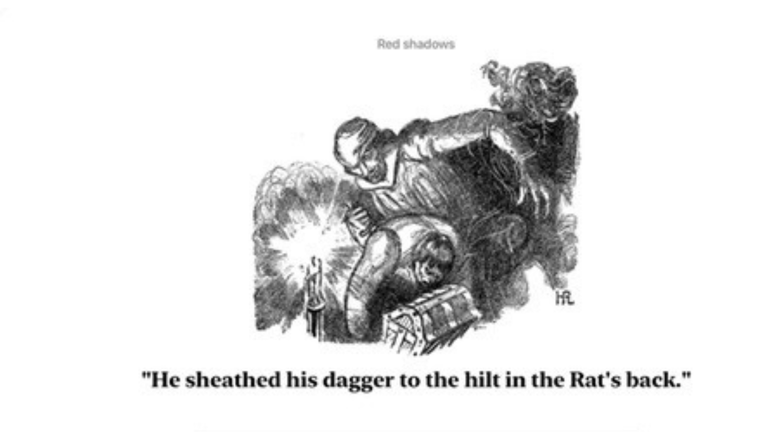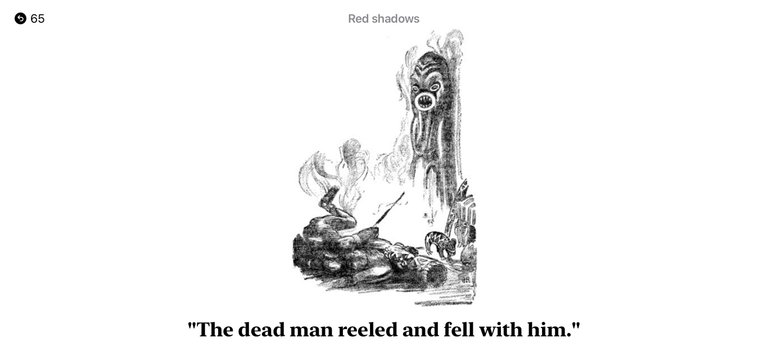
Robert E. Howard is most known as the creator of the iconic sword and sorcery hero, Conan the Barbarian. But before Conan, Howard wrote the savage tales of Solomon Kane, the Puritan. First published in the August 1928 edition of Weird Tales magazine, "Red Shadows" is the first adventure of the wondering avenger Solomon Kane. This story is almost 100 years old now and in the public domain. Fans of pulp fiction and action-adventure tales can read it for free at Project Gutenberg.
The tale begins on misty moonlit night, sometime in the 16th or early 17th century, somewhere in the countryside of France. A wanderer dressed in black comes across a dying girl. He asks her what happened? With her last breaths, she tells him the infamous bandit Le Loup and his men pillaged and massacred her nearby village. She tried to run away, but Le Loup caught up and stabbed her with his dagger. Then she dies in the man's arms.
“Slowly he rose, mechanically wiping his hands upon his cloak. A dark
scowl had settled on his somber brow. Yet he made no wild, reckless
vow, swore no oath by saints or devils.
"Men shall die for this," he said coldly.”
-Excerpt From Red Shadows by Robert E. Howard
What a genius beginning to a revenge tale. Right to the action, within the first few pages we know Solomon Kane is a real badass, his motivation is to avenge the girl, and his enemy is Le Loup (the Wolf). Kane spends the next years of his life staying true to his word, systemically hunting down every one of Le Loup's gang, and relentlessly chasing the evil bandit leader literally to the ends of the earth.

The second scene of the story takes place in Le Loup's bandit cave hideout. Some months have passed and much of the gang is dead. The remaining few bandits shudder as they know Solomon Kane will soon come for them. Le Loup and his right hand man, the Rat decide to make a run for it with the loot. In what is now classic villainous form, Le Loup stabs the Rat in the back in order to take all the treasure for himself.
Howard beautifully develops the antagonist Le Loup as both a mirror and polar opposite of Solomon Kane. Both men are strong and brutal. Kane is stoic and serious, driven by a fanatical sense of holy justice, he seeks out evil and defends the innocent as judge, jury and executioner.
Le Loup, in contrast, laughs and makes jokes, but is cruel, driven purely by his own self interest in increasing his wealth, pleasure and power. If we were to make these characters in Dungeons and Dragons, Le Loup would be a Chaotic Evil Rogue, and Solomon Kane a Lawful Good Paladin. Together, like yin and yang, they form two halves of the same coin.

Kane ends up chasing Le Loup all the way to the jungles of Africa. It's here where we confront some of Howards known colonialist and racist attitudes. Howard's portrayal of Africa and its inhabitants is rife with dehumanizing tropes and stereotypes. That these attitudes may have been common in early 20th-century pulp fiction, is no excuse and makes them no less deplorable. I struggle with the question on whether an artists work can be separated from the artist. But as modern readers, I think it is possible to approach texts like this with a critical lens, acknowledging these flaws, while still being able to learn from and appreciate Howard's talent as a storyteller.
It is here in the Jungle, where the sword and sorcery adventure truly begins. In this section we get an eldritch god that thirsts for blood, a sorcerer that can animate dead bodies with his spirit, and a wonderful moonlit sword fight between Kane and Le Loup. It's non stop page turning pulpy action. When you read this section, you feel like you've read/seen some these scenes before. Because you likely have. Howard's stories are being constantly reimagined and built upon in modern TV, movies, and literature. Which is one of the reasons I like can reading stories like this and getting to know where it all came from.

I've read a few of Howard's Conan stories, but this was my introduction to Solomon Kane. "Red Shadows" offers a tale of relentless vengeance and a glimpse into the origins of a genre. It was a thrilling, vivid, and tightly paced ride. There's a lot to unpack in the story and I'll be thinking about it for a while. I'd recommend this tale for fans of sword and sorcery adventure and those interested in reading the early influences of many of the action/adventure stories we see in movies and on TV today. I'm intrigued by the main character and plan to check out a few more Solomon Kane stories we can read for free on Project Gutenburg.
Congratulations @thoth442! You have completed the following achievement on the Hive blockchain And have been rewarded with New badge(s)
Your next target is to reach 50000 upvotes.
You can view your badges on your board and compare yourself to others in the Ranking
If you no longer want to receive notifications, reply to this comment with the word
STOPCheck out our last posts: